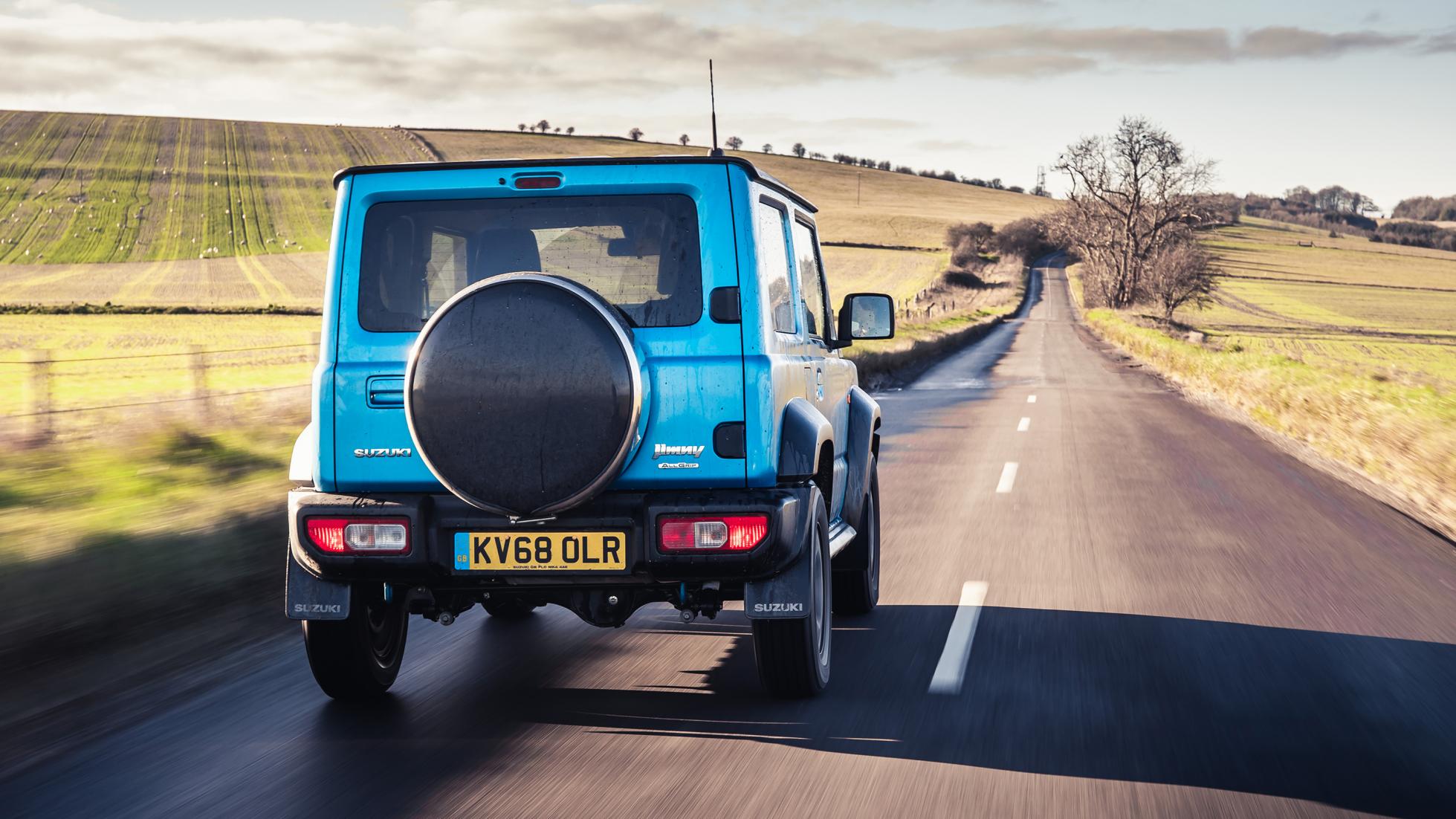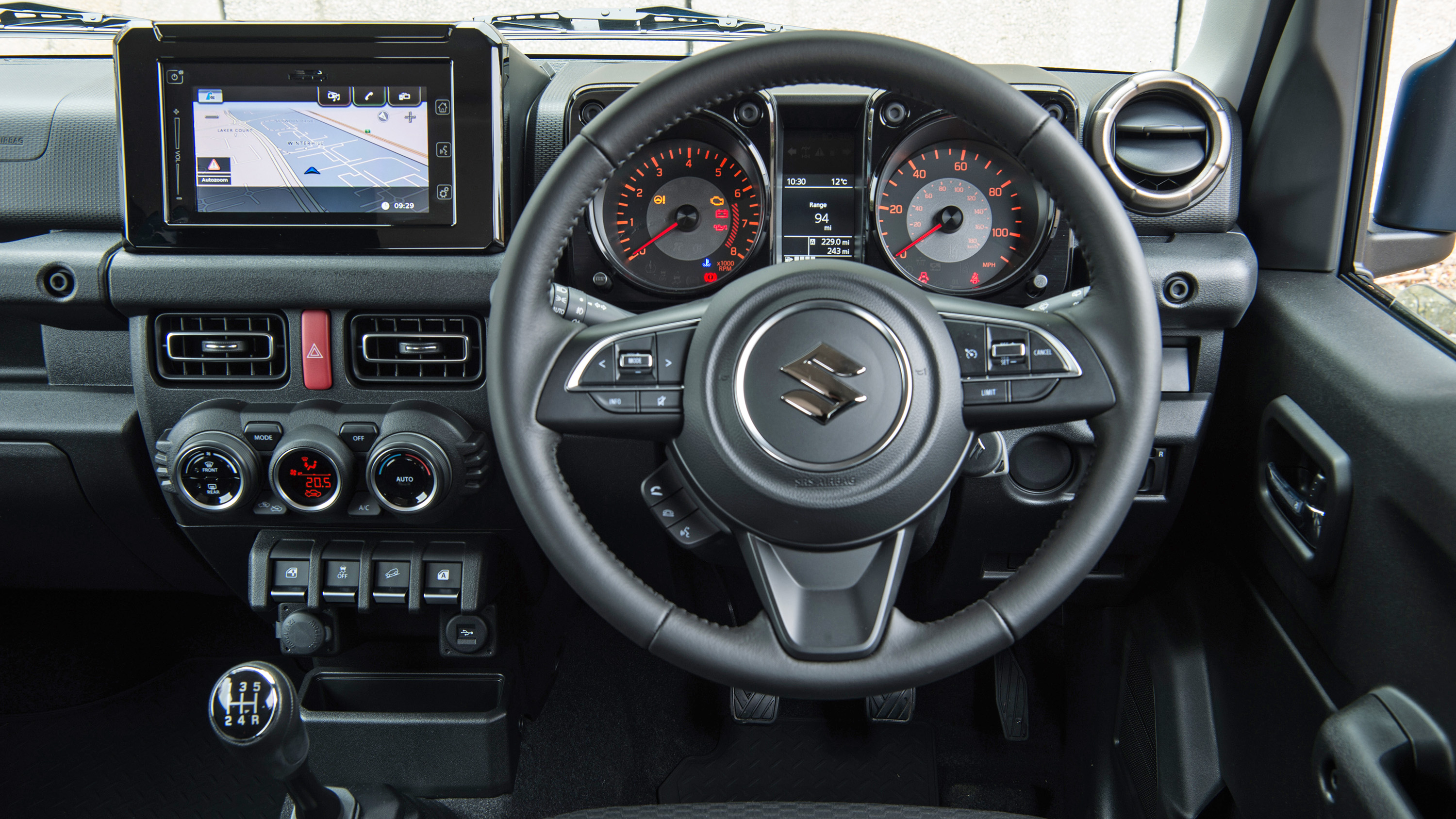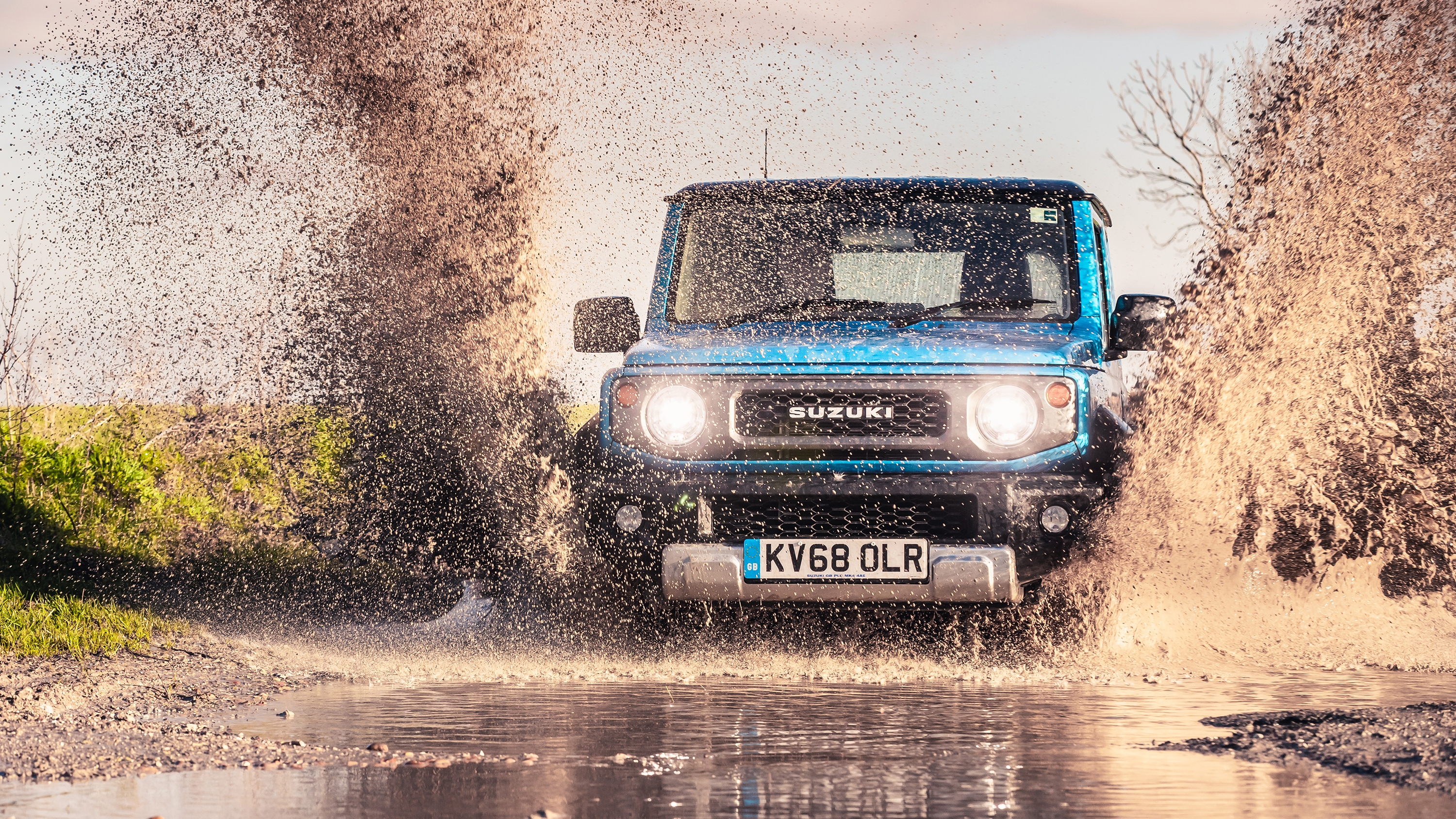
Interior
What is it like on the inside?
The Jimny’s theme of majoring on no-nonsense utilitarian hardiness with just a smattering of twee touches continues inside. You eye simple dials and a monochrome multi-function computer, but the clock faces are mounted in cool oblong pods with exposed bolt heads. Normally that’d constitute shoddy workmanship, but Suzuki’s made them an industrial feature.
So, we don’t mind that the dash is a cliff face of hard plastic. It feels solid, not brittle, and you could hang something a lot heavier than the Saturday takeaway from the passenger-side Jesus handle. Don’t expect any fancy infotainment touchscreens in here, either, though you do get a DAB radio and Bluetooth.
What about gnarly practical stuff?
You might find you’re short of storage up front. The (undamped) glovebox is bijou, the door pockets are practically 2D and would be filled by a postcard, there are two small cupholders between the seats, and no sunglasses cubby in the roof. Nothing’s been allowed to eat into passenger space, which also transforms depending on what you’ve done with the front windows. Glass raised, there’s a shortage of elbow room – not as severe as in an old Landie Defender, but pinched all the same. Drop the windows via their centrally mounted switches and with an elbow perched atop the windowsill, motoring has rarely felt more cheerful.
The manually adjustable seats are comfortable, but lack ultimate off-road support, and face a steering wheel which only adjusts for rake, not reach. A six-foot driver can feel comfortable enough given time to acclimatise and if they’re happy to sit atop the steering wheel, but if they’d hopped straight in from a Jeep Renegade or Mazda CX-3 (as you can tell, picking a dead-on Jimny rival is tricky), then the Suzuki would’ve felt archaically awkward.
Dare I ask about the seats in the back?
The Jimny used to be able seat four adults, or offer 830 litres of luggage space. But it could not do these things at the same time. In fact, with the rear seat backs raised, the boot would struggle to swallow a MacBook Air. Swing the gas strut-assisted, hinged tailgate open (hinged from the right so it’s pavement-ready for the UK, Australia and Japan, but not for left-hand-drive markets) and you'd find that, beyond the 382mm wider loading bay, the backrests butt right up to the back window.
The two rear seats are pinched to the middle of the cabin for greater legroom and a superior view forward, and they're incredibly roomy, with enough headroom for proper adults and much more elbow room to be smug about. You can also fold the front seats near-flat and have them join the rear seat squabs as a makeshift bed. Happy camping.
Tugging a simple fabric loop meant they folded into the floor, revealing their plastic chequer plate loading surface that ought to be easy to wipe clean. That was your lot, gimmick-wise. No five-door, or a long-wheelbase. Basically, it's a 2+2 city car, or a covered pick-up truck.
Of course this is all moot now that brand-new Jimnys only come with the seats removed, a cage betwixt front occupants and load bay (which does no favours for the driving position or leg room), and a 33-litre embiggened capacity (now 863 litres). Just bear in mind the payload is a pretty paltry 150kg – a mere third of what Dacia’s commercial Duster offers. This is a van you’re buying for its off-road nous, its hipster-retro looks, or its fairly unique combination of the two.
Featured

Trending this week
- Car Review
BMW 1 Series
- Top Gear's Top 9
Nine dreadful bits of 'homeware' made by carmakers






